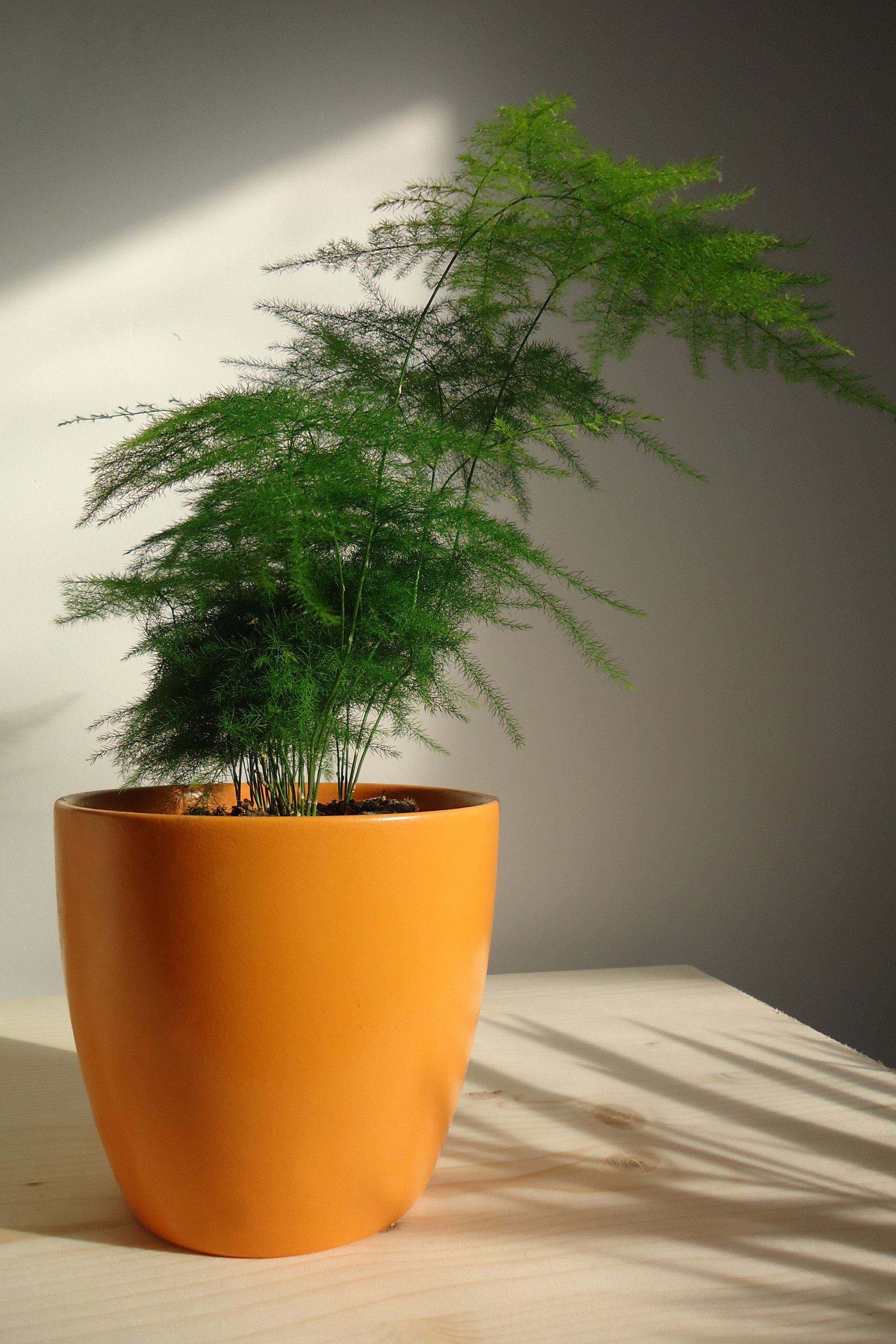The Asparagus Fern: A Delicate Beauty for Your Home
The Asparagus Fern, despite its name, is not a true fern. It belongs to the lily family and is admired for its feathery, light, and airy foliage that adds a touch of elegance to any space. Native to South Africa, this popular houseplant thrives in warm, humid environments, making it a perfect choice for indoor gardens.
Types of Asparagus Ferns
There are several varieties of Asparagus Ferns, each with its unique characteristics:
Asparagus densiflorus ‘Sprengeri’: This is the most common type, known for its dense, arching stems covered in needle-like leaves.

Caring for Your Asparagus Fern
Asparagus Ferns are relatively easy to care for, making them suitable for both novice and experienced plant owners. Here are some essential tips to keep your fern healthy and thriving:
Light: Asparagus Ferns prefer bright, indirect light. Avoid placing them in direct sunlight, as this can scorch their delicate foliage.
Potential Problems
While Asparagus Ferns are generally low-maintenance, they can be susceptible to certain pests and diseases:

Spider mites: These tiny pests can cause yellowing and stippling of the leaves. Treat with insecticidal soap or neem oil.
Toxicity
It’s important to note that Asparagus Ferns are toxic to cats and dogs if ingested. Keep them out of reach of pets to avoid any potential health issues.
Conclusion
The Asparagus Fern is a beautiful and versatile houseplant that can add a touch of elegance to any home. With proper care, this delicate beauty can thrive for many years, providing you with lush, feathery foliage to enjoy. Remember to provide it with bright, indirect light, consistent moisture, and occasional pruning to keep it healthy and happy.
:strip_icc()/how-to-grow-and-care-for-an-asparagus-fern-5660609-Primary-4b7975d74ca44d7084c91bf876f28e2c.jpg)
FAQs
Is Asparagus Fern an air purifier?
While not as effective as some other houseplants, Asparagus Ferns can contribute to improving indoor air quality by removing certain pollutants.
How often should I water my Asparagus Fern?
Water your Asparagus Fern when the top inch of soil feels dry to the touch. This may vary depending on the environment and the size of the plant.
Can I grow Asparagus Fern outdoors?
Yes, Asparagus Ferns can be grown outdoors in USDA hardiness zones 9-11. They prefer partial shade and well-draining soil.
Why is my Asparagus Fern turning yellow?
Yellowing leaves can be a sign of several issues, including overwatering, underwatering, nutrient deficiency, or pest infestation. Check the plant’s environment and care routine to identify the cause.
How do I propagate Asparagus Fern?
Asparagus Ferns can be propagated through division or by planting the small berries that appear after the flowers fade.


:strip_icc()/Norway-Spruce-Evergreen-Tree-48c81b7ef15d46bb8dc0989ab0fa5cc8.jpg?w=200&resize=200,112&ssl=1)



:max_bytes(150000):strip_icc()/english-boxwood-shrubs-2132072-hero-03-c9f674badbbb45128597f71cb35a71d7.jpg?w=200&resize=200,112&ssl=1)
